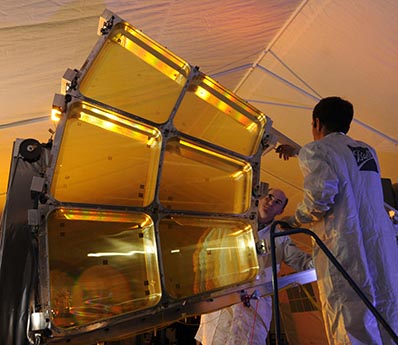
Membrane Optical Imager for Real-Time Exploitation
Breaking the glass ceiling
That’s why we developed a revolutionary new way to construct very large aperture telescopes. Working under a 2010 contract from the Defense Advanced Research Projects Agency (DARPA), we designed, built and validated MOIRE, a technology that utilizes replicated diffractive optics.
Using a very thin transparent membrane, segments are etched with a diffraction pattern, the primary optical element used to focus light. This design can be rapidly manufactured, significantly reducing cost compared to reflective systems, and is extremely lightweight, enabling the use of existing launch vehicles.
Our game-changing approach allows the production of 20 meter-plus apertures that dwarf any space telescope currently under development – the James Webb Space Telescope, the largest telescope built to fly in space, is only 6.5 meters.

What We Did
Telescope Designer
As the prime contractor for the MOIRE program, we assembled a complete end-to-end demonstration telescope. The optical and imaging quality of the telescope was measured for a single panel with color correction over a narrow spectral bandwidth, showing the quality imaging capabilities of this new technology. The technology matured for the MOIRE program enables narrow-band, persistent, real-time video of areas on the Earth from geosynchronous orbit 22,000 miles above the surface.
Ball’s work on MOIRE draws on our experience designing, manufacturing and testing large optics for programs like the James Webb Space Telescope and Kepler.
Technology Applications
From astrophysics to surveillance
Large diameter, lightweight aperture telescopes enable high-resolution, low-light science imagery at a reasonable mission cost. This enables MOIRE to perform exoplanet spectrometry missions, a follow on step for the Ball-led Kepler mission.
